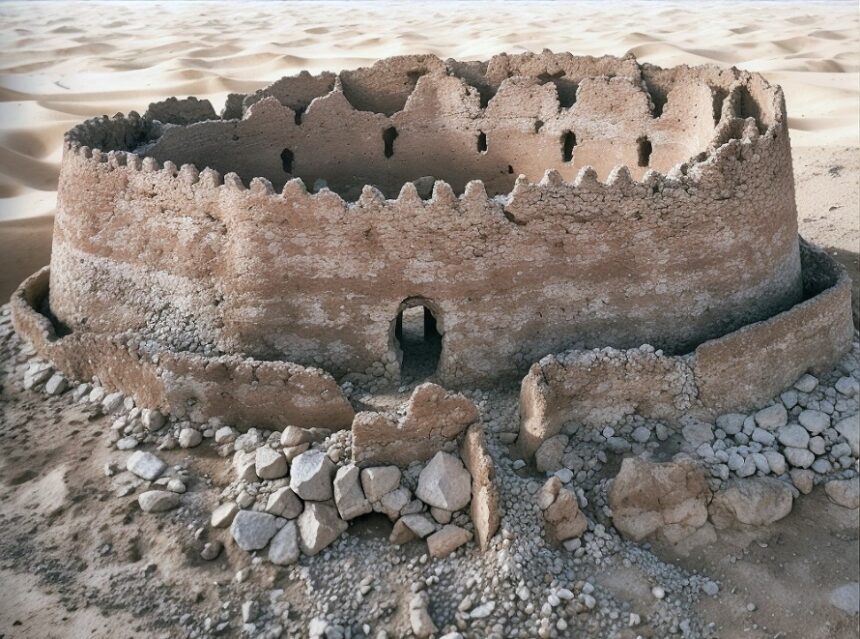Introduction: A Desert Enigma
In the heart of Algeria’s Sahara Desert, near the oasis town of Timimoun, stands the Ksar of Draa—an ancient circular fortress steeped in mystery. With its unique design, historical ambiguity, and enduring resilience, this enigmatic structure has intrigued historians, archaeologists, and travelers for centuries. Dating back to approximately the year 1000, the ksar’s origins and purpose remain uncertain, adding to its allure.

A Unique Architectural Wonder
The Ksar of Draa’s most striking feature is its circular layout, a rare design choice for Saharan fortifications. Surrounded by a 2-meter-high wall with a single northern entrance, it offered both protection and exclusivity. The interior comprises numerous small, isolated rooms arranged across three levels. Above these rooms, an elevated gallery served a defensive role, allowing residents to monitor the surrounding landscape and fend off potential threats.

The materials used to construct the ksar—stone, mudbrick, palm wood, and clay—reflect the ingenuity of its builders, who adapted to the challenging desert environment. The combination of these resources ensured durability against harsh winds, extreme temperatures, and the passage of time.
Legends and Theories About Its Purpose
The absence of written records about the Ksar of Draa has left its purpose open to speculation. Oral traditions and historical theories offer intriguing possibilities:
- A Caravanserai: Some believe the ksar served as a waystation for traders traveling across the Sahara. Its strategic location and fortified design would have made it an ideal resting point, providing security and sustenance.
- A Refuge for Jews: Another theory suggests it was a sanctuary for Jewish communities fleeing persecution during the Tuat War, a 15th-century conflict led by Sheikh Maghili against Jewish settlements near the Sahara. The ksar’s isolated position and defensible design support this interpretation.
These theories highlight the cultural and historical complexity of the region, where diverse peoples and traditions intersected.
Cultural Significance and Resilience
The Ksar of Draa exemplifies the ingenuity and adaptability of ancient desert communities. Its design reflects a deep understanding of the environment, with features tailored to withstand the Sahara’s extremes.

More than just a defensive structure, the ksar likely played a vital role in fostering community and providing a safe haven in a vast, inhospitable landscape. Its circular design, symbolically and functionally unique, may have represented unity or exclusivity, further enhancing its significance.
A Testament to Time and Mystery
Despite centuries of erosion, sandstorms, and neglect, the Ksar of Draa endures—a testament to the skill of its builders and the resilience of its design. Its mysterious origins and function continue to inspire curiosity, drawing visitors and researchers to explore its secrets.

The lack of concrete historical records surrounding the ksar adds to its mystique, making it a cultural and archaeological puzzle. In the absence of definitive answers, the Ksar of Draa invites us to imagine its past, envisioning the lives it sheltered and the stories it holds.
Conclusion: A Symbol of Endurance and Mystery
The Ksar of Draa is more than a historical site—it is a symbol of human ingenuity and the enduring allure of the unknown. Its circular walls, perched amidst the shifting sands of the Sahara, guard secrets that may never be fully unraveled. As it stands resilient against time, the ksar remains a powerful reminder of a bygone era, where the desert’s silence holds whispers of a forgotten past.
This ancient marvel not only enriches Algeria’s cultural heritage but also captivates the imagination of all who encounter its enigmatic charm.

